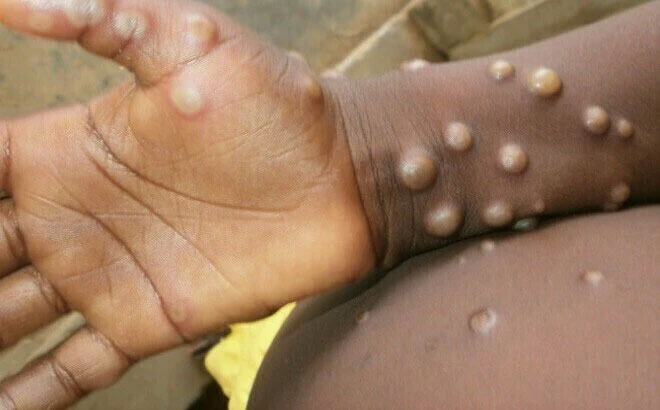Detecting the second strain of monkeypox virus that is spreading fast
Genetic analysis of recent monkeypox cases shows that two distinct strains are spreading in the US. Health officials considered the possibility that the virus had been circulating for a long time but went undetected.
According to ABC News, this announcement was made by the US Centers for Disease Control and Prevention (CDC) during a meeting on June 3, highlighting the possibility that the monkeypox virus has been spreading for some time but has not been detected. .
Related health officials say many cases of monkeypox in the US are caused by a strain similar to the outbreak in Europe - the West African strain. This strain causes a relatively low mortality rate, around 1%.

Many cases of monkeypox in the US are caused by a strain similar to the European cluster - the West African strain
However, some recent gene sequencing results in a different strain. This strain was found in patients in the US, before the current outbreak appeared.
CDC expert Jennifer McQuiston said more analysis is needed from multiple patients in the US to determine how long monkeypox has been spreading in this country and elsewhere. 'I'm fairly certain that monkeypox cases in the US were present before it was brought into the spotlight, but it's unclear to what extent. It is possible that community-level transmission of the disease is occurring in unspecified areas of the United States," the expert said.
The CDC said it is trying to strengthen its search for infections and the possibility of more cases being reported.
Virologist Dr Angela Rasmussen, of the University of Saskatchewan, Canada, says this finding is very important. That is, if there was an outbreak of monkeypox, it could be very difficult to contain. Because we don't know how long the infection has happened and where. Some infected people may have been misdiagnosed with another disease.
This is also what Dr Rasmussen is worried about: 'We don't really know how many cases are being affected'.
Monkeypox is a contagious disease in parts of Africa, where people contract the virus through the bite of rodents or small animals. It is not usually contagious from person to person.
But from May, cases began to appear en masse in Europe and North America. Most of the patients had traveled internationally. As of June 2, the US has identified at least 20 cases of monkeypox in 11 states. More than 650 other cases have been detected in at least 30 countries. Many of the cases linked to homosexual activity stem from two recent events in Europe.
To date, many of the cases reported outside of Africa are of men who have sex with men. But health officials stress anyone can get monkeypox. It usually begins with flu-like symptoms and swollen lymph nodes, followed by a rash on the face and body.
No deaths from monkeypox have been reported in the US or Europe. But that could change if infections start to occur in vulnerable people, such as young children, with weakened immune systems, Dr. Rasmussen stressed.
She also raised another concern that even if community outbreaks are brought under control, it is likely that the virus will persist in rodent populations in the US.
Also on June 3, the CDC released an analysis of the first 17 cases reported in the US. The average age of the patients was 40. With one exception, all identified themselves as men who have sex with men. 14 have a history of international travel, to 11 different countries.
- Detecting a deadly virus that is spreading fast
- Discover more new strains of HIV
- How long does corona virus survive on object surfaces? This is the answer from science!
- Successfully created deadly flu virus in the laboratory
- How does corona virus attack human cells?
- The HIV resistant virus strain is at risk of spreading
- Zika virus in Singapore can evolve from the strain 60 years ago
- Identify strange virus causing pneumonia in China
- Expert: Monkeypox epidemic can be transmitted through 2 large gay parties in Europe -
- Discovering new, more dangerous HIV strains in Russia
- Detecting nCoV virus in the external environment
- How dangerous is monkeypox?
 Green tea cleans teeth better than mouthwash?
Green tea cleans teeth better than mouthwash? Death kiss: This is why you should not let anyone kiss your baby's lips
Death kiss: This is why you should not let anyone kiss your baby's lips What is salmonellosis?
What is salmonellosis? Caution should be exercised when using aloe vera through eating and drinking
Caution should be exercised when using aloe vera through eating and drinking